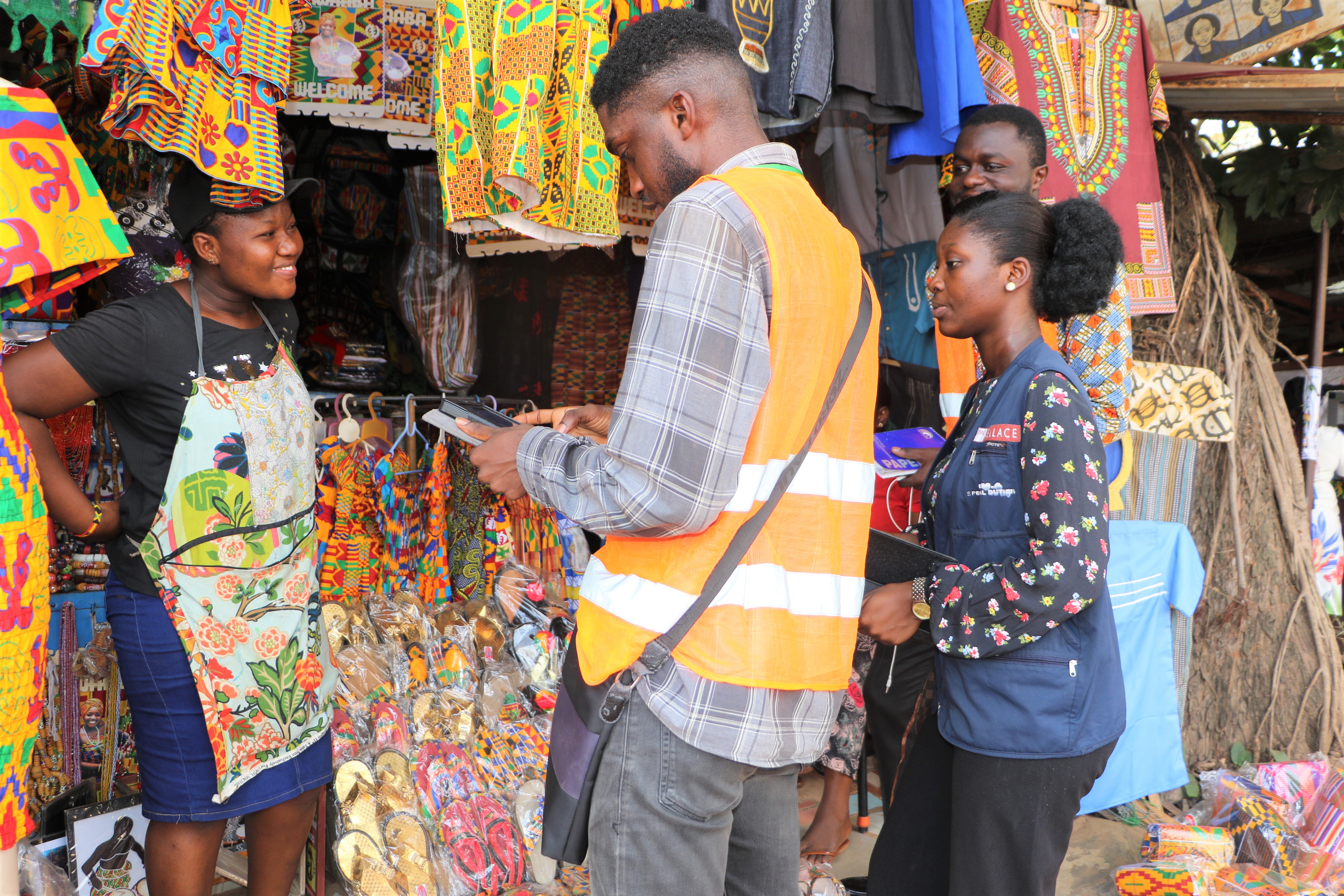District Assemblies are performing below their revenue mobilization potential - report reveals
December 20, 2023

Enumerators collecting data for the assessment.
Findings from an assessment of the internal revenue mobilization efforts of selected district assemblies in Ghana reveal huge gaps compared to the districts’ revenue mobilization potential. The report calls for urgent need to address logistical constraints to increase coverage of tax revenue collection; and transparency and social accountability to encourage payment of taxes.
The assessment was carried out by the Ghana Statistical Service (GSS), in partnership with the United Nations Development Programme (UNDP). This evaluated the 2022 revenue mobilization performance of five selected Metropolitan, Municipal, and District Assemblies (MMDAs) in Ghana. The MMDAs include Jomoro Municipal Assembly (Western Region), Kassena–Nankana West District Assembly (Upper East Region), Ketu South Municipal Assembly (Volta Region), Kumasi Metropolitan Assembly (Ashanti Region), and Sagnarigu District Assembly (Northern Region).
The assessment involved a survey and focus group discussions with a focus on selected digitized areas where revenue collection was being done. Data collection was limited to revenue mobilization on Business Operating Permits at the districts.
The analysis reveals varying revenue mobilization gaps between the selected districts, compared to their estimated revenue potential. The data show three of the five districts collected less than half of their estimated potential revenue. These include:
Sagnarigu Municipal District: This Assembly’s actual revenue collected in 2022 was only about Gh¢98,000 as against a potential revenue of about Gh¢1.3 million. This means the district only collected about 7 percent of its potential revenue.
Jomoro Municipal Assembly: The actual revenue realized by Jomoro in 2022 was about Gh¢190,000, which was not up to half of its estimated potential revenue of about Gh¢423,000. This translates to about 45 percent of its potential revenue.
Ketu South Municipal Assembly: Ketu South lost close to Gh¢780,000 revenue in 2022, as it realized only about 498,000 compared to its potential revenue of Gh¢1.3million.
On the other hand, Kassena Nankana West District and Kumasi Metropolitan recorded more than 80 percent of their potential revenue. Kassena Nankana West District’s potential revenue was estimated at about Gh¢400,000 and they mobilized around GH¢350,000 in 2022. This represents 87 percent of the business operating permits the district should have collected in the specific areas where the data collection took place. Moreover, the potential revenue for Kumasi Metropolitan Assembly is about Gh¢3.6 million and actual revenue collected was around Gh¢3million, representing about 86 percent of its potential revenue in 2022.
The scope of the report was limited, however the recommendations are a useful guide for interventions to strengthen tax performance. This includes logistical support, capacity strengthening of tax collectors, up-to-date data on all businesses as well as more transparency and accountability in the use of taxes to encourage compliance and close the gap in revenue collection in the MMDAs.
The assessment and data collection exercise falls within UNDP’s Tax for SDGs initiative, seeking to enhance the capacity of MMDAs for improved efficiency and address challenges related to tax avoidance, evasion, and illicit financial flows. In addition to the assessment, the Tax for SDGs initiative has also provided the selected MMDAs with comprehensive and up-to-date data on businesses within their jurisdiction.
“The data collected for us on businesses is very good as this is enabling us to apply suitable tax rates tailored to the diverse types and sizes of businesses. It is helping us to transition from the existing flat rate approach”, noted Mohammed Muniru A. Iddrisu, District Planning Officer, Kassena Nankana West District Assembly.
Read more from the report here or https://bit.ly/41ud7Oq

 Locations
Locations



